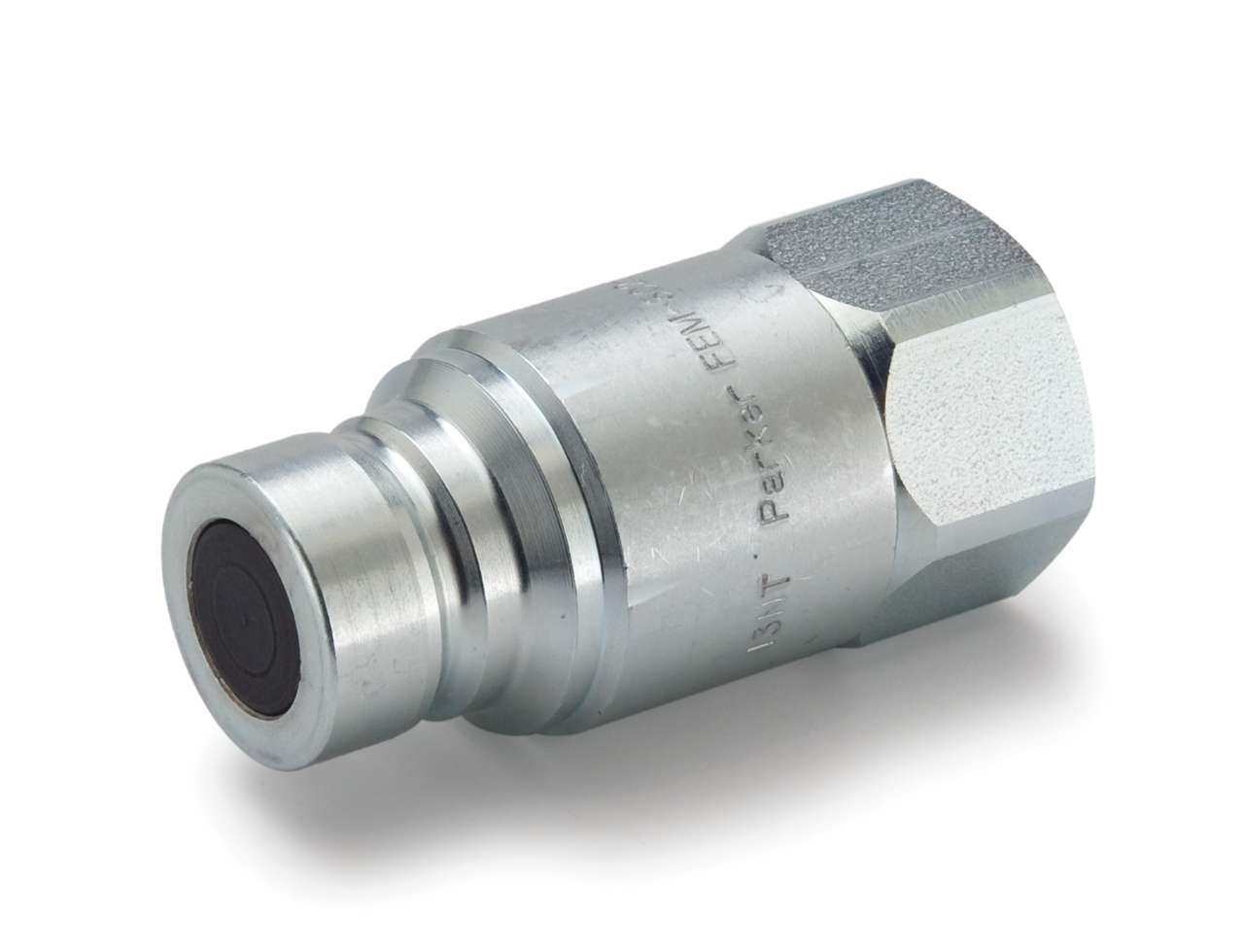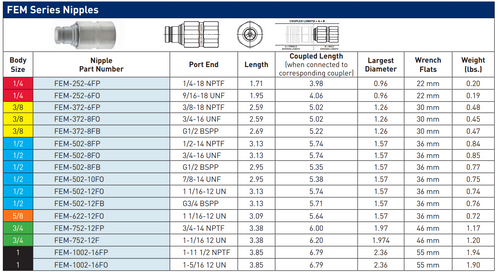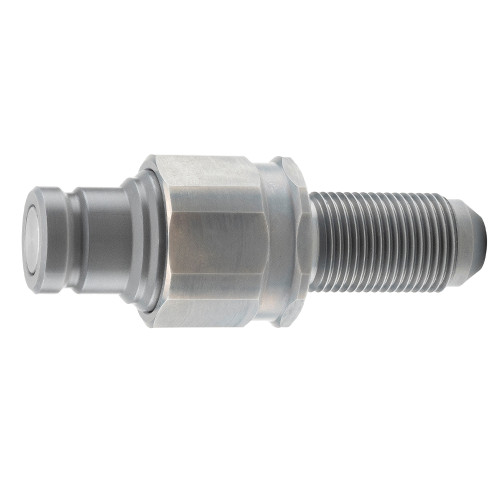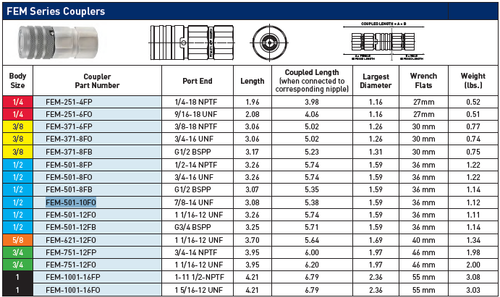Product Description
Pioneer FEM Series Non-Spill Nipple | FEM-502-12FO
FEM Series Nipples (hydraulic) up to 5000 psi, connect with FEM Series Couplers. All FEM Series parts meet or exceed design and performance requirements of Hydraulic Tool Manufacturer's Association (HTMA - ISO 16028) standards.
Parker's FEM Series quick connect fittings are double shut off, non-spill, flat face quick couplings designed to minimize spillage and air inclusion when connecting or disconnecting and are interchangeable with other products complying with HTMA - ISO 16028. FEM quick couplers and nipples are available in a range of sizes as well as male and female fitting ends to be versatile for use in applications with pressures up to 5000 psi.
Features:
- Flush, non-spill valving. Flat face valves minimize fluid loss when disconnecting, to reduce environmental contamination and avoid safety hazards caused by spillage
- Global interchangeability with other ISO 16028 compliant couplings
- Hardened nipple bodies
- Sleeve-Lok design standard
- Connect-under-pressure FEC nipple option
- Protective zinc nickel plating
- Common Bobcat Skid Steer Flat Face Tip
- Flat face valves minimize the amount of air that can enter the system when connecting fluid lines, thus preventing accelerated wear of the system's components.
- Male bulkhead fitting ends for panel or plate mounting options
Specifications:
- Body Size: 1/2"
- Nipple Part Number: FEM-502-12FO
- Port End: 1 1/16-12 UN
- Length: 3.02"
- Coupled Length: 5.74"
- Largest Diameter: 1.38"
- 1" O-Ring
- Wrench Flats: 1.25
- Weight(lbs): 0.54
- Coupling Half: Male Nipple
- Specifications Met: ISO 16028, ISO 16028, HTMA
- Maximum Operating Pressure: 5000
- Maximum Operating Temperature: 250 °F, 110 °C
- Valve Type: Non-spill
- Application: Hydraulics, n/a, non-spill
- Minimum Operating Temperature: -40 °F, -40 °C
- Connection Type: Female UNF
- Product Type: Push to Connect, Quick coupling
- Flow Rate: 12 gal/min, 55 L/min
- Hex Size: 36 mm
- Body Material: Steel
- Plating Type: Zinc Nickel, Zink Nickel
- Seal Material: Polyurethane/Nitrile, NBR
Materials of Construction:
- Body: Steel
- Finish: 1/4”, 5/8” to 1” Zinc with clear trivalent chromate 3/8” & 1/2” Zinc Nickel
- Valve: Flush face valving
- Seal: Polyurethane and Nitrile
Technical Characteristics:
- FEM Sizes: 1/4” – 1”
- Materials: Steel
- Port Ends: Female NPSF, Female ORB, Male Bulkhead Flare, Male Bulkhead Face Seal
Markets:
- Industrial
- Construction
- Utility
- Agriculture
Applications:
- Skid loader attachments
- Hydraulic tools
- Construction equipment attachments
- Industrial hydraulic lines
- Agricultural implements
- Coolant fill and drain lines - Contact QCD for a brass, FEM style drain port nipple that is recommended for use by the Technology and Maintenance Council of the American Trucking Association, TMC Recommended Practice 353
FAILURE OR IMPROPER SELECTION OR IMPROPER USE OF THE PRODUCTS DESCRIBED HEREIN OR RELATED ITEMS CAN CAUSE DEATH, PERSONAL INJURY AND PROPERTY DAMAGE.
- This document and other information from Parker-Hannifin Corporation, its subsidiaries and authorized distributors provide product or system options for further investigation by users having technical expertise.
- The user, through its own analysis and testing, is solely responsible for making the final selection of the system and components and assuring that all performance, endurance, maintenance, safety and warning requirements of the application are met. The user must analyze all aspects of the application, follow applicable industry standards, and follow the information concerning the product in the current product catalog and in any other materials provided from Parker or its subsidiaries or authorized distributors.
- To the extent that Parker or its subsidiaries or authorized distributors provide component or system options based upon data or specifications provided by the user, the user is responsible for determining that such data and specifications are suitable and sufficient for all applications and reasonably foreseeable uses of the components or systems.




 US Dollars
US Dollars
 Canadian Dollar
Canadian Dollar
 Australian Dollar
Australian Dollar
 Euro
Euro























